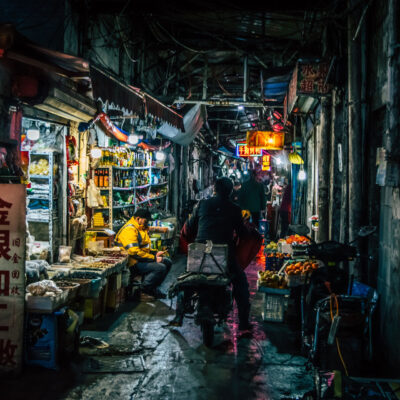Shangai

“To my child’s eyes, which had seen nothing else, Shanghai was a waking dream where everything I could imagine had already been taken to its extreme.”
Shanghai’s famous skyline tells hidden stories of fast growth and modernization, where old and modern elements, eastern and western cultures all come together. The skyscrapers next to the old traditional buildings create a poem of magical and inspiring contrasts. Pearl of the Orient, Paris of the East: the nicknames seem to recall the expressive power of a city strongly connected to the West, but Shanghai’s actual name preserves its oriental roots and the connection with the sea. The city built its identity on this relentless fight and love between tradition and modernity, West and East, like in an ancient tauromachy with new faces.
Shanghai’s dualism influences its art and culture, from food to buildings. These two intertwined souls find their highest expression in the city’s architecture; since the boom of the Chinese economy in the 1920s and 1930s, Shanghai has built most of the Art Deco buildings in the world. The city is defined by the style of constructions
like the Park Hotel, the Grand Cinema and the Paramount, built in the early 20th century by László Hudec, one of the architects who took Shanghai on the international arena. When western art met Jiangnan Chinese tradition, one of Shanghai’s most peculiar architectural elements appeared: the Shikumen. Literally ‘stone warehouse gate’, the Shikumen is a residence usually characterized by the outside wall made of gray bricks and a front yard protected by a heavy wooden door in a stylistic stone arch. The buildings are connected by alleys called longtang.
As someone said, “If Beijing is China’s traditional, responsible older brother, Shanghai is the fashionable, shopaholic Wall Street younger sister who works hard and plays even harder.”
Fast, bright, cutting-edge, over-the-top: everything in Shanghai is taken to its extreme and beyond. As one of the world’s most important business centers, the city is always in a hurry and seems to have buried its soul under unbelievable concrete highways. But Shanghai may just be the one and only place that can make such opposite identities coexist. Right at the intersection of the two busiest highways downtown, a gaudy, glowing pillar adorned with dragons carries the weight of a city that grew too quickly. The story of the Nine Dragon Pillar seems to tell the whole world how important it is to always remember our roots. Legend has it that it was impossible to dig the ground where the pillar was, so the construction workers visited a Buddhist priest to ask for guidance. The man revealed that there was a dragon’s lair beneath the earth, and an offended dragon was waiting to be recognized. After being properly honored, the dragon allowed the construction workers to keep doing their job.
Fast, bright, cutting-edge, over-the-top: everything in Shanghai is taken to its extreme and beyond.
As in the legend, in many industrialized and forward-looking districts you can still find old hidden corners to be appreciated, like Qibao and its old traditional temple, now enriched with museums and street food attractions. In Jiading district, now full of factories and industries, you can still sense the historical charm of one of the most well-preserved Confucian temples, pa- godas, canals, and parks. This history of contrasts has made Shanghai the perfect multicultural environment to host great events like the ones in front of the Huxi Mosque. The typically overcrowded market with striking colors, flavors and perfumes unpredictably mingles with the surroundings, always accompanied by the background noise of cars wildly honking their horns to get through the crowd of hungry tourists and locals.
Alongside the fascinating folklore, Shanghai is truly passionate about progress, technology and design. To say it in the words of Patricia Marx, “New York may be the city that never sleeps, but Shanghai doesn’t even sit down, and not just because there is no room.” In just a few years the city completely transformed its skyline and its system. Currently one of the most important centers for international design and avant-garde fashion runways, Shanghai keeps breaking new ground by attracting and discovering important architects, interior designers, property developers, retailers, private buyers and many others. Shanghai’s West Bund, originally an industrial area for airplane manufacturing, is now a playground for art and innovation. To transform the West Bund into an artistic and cultural hub, the city encouraged the rapid establishment of art museums and galleries along the lively waterfront, turning it into a place where you can easily run into the blooming artistic soul of a city that shines 24/7.
To say it in the words of Patricia Marx, “New York may be the city that never sleeps, but Shanghai doesn’t even sit down, and not just because there is no room.”
To say it in the words of Patricia Marx, “New York may be the city that never sleeps, but Shanghai doesn’t even sit down, and not just because there is no room.”
“To my child’s eyes, which had seen nothing else, Shanghai was a waking dream where everything I could imagine had already been taken to its extreme.”